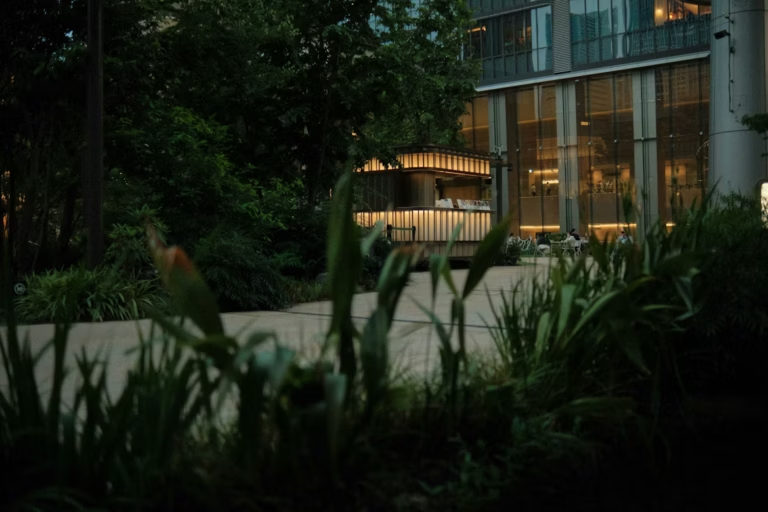Construction sites are highly dynamic environments that often house valuable equipment, materials, and tools. Due to their open nature and fluctuating workforce, construction sites are particularly vulnerable to theft, vandalism, unauthorised access, and even accidents. Implementing effective construction site security measures is crucial to safeguarding these valuable assets, protecting workers, and ensuring that the project remains on schedule without costly disruptions.
At Smartsec Security Solutions, we specialise in providing independent, unbiased security consulting for businesses across Perth and Australia. Our expertise in construction site security ensures that your project is well-protected from physical threats, allowing you to focus on completing your work efficiently and safely.
In this article, we’ll explore why securing a construction site is essential and offer practical solutions to help you enhance security on your project.
Why Construction Site Security is Important
Construction sites face several unique security challenges due to their open nature and the presence of valuable assets. Whether you’re managing a large commercial project or a smaller residential development, securing a construction site is critical for a number of reasons:
- Theft Prevention: Construction sites often store valuable materials, tools, and machinery that are attractive targets for thieves. Without proper security measures, the theft of these assets can result in significant financial losses and project delays.
- Vandalism Deterrence: Vandalism can be a costly disruption to any construction project. Damage to equipment or incomplete structures can cause delays, increase costs, and require expensive repairs.
- Unauthorised Access: Construction sites are hazardous environments, and unauthorised access by the public or trespassers can lead to serious accidents, injuries, and potential legal liabilities. Ensuring that only authorised personnel can enter the site is essential for safety.
- Accident Prevention: Unsecured construction sites are not only at risk of theft and vandalism but also pose safety risks for workers. Proper security measures help enforce safety protocols and ensure that equipment is used only by trained personnel.
- Project Continuity: Construction site security is crucial for keeping projects on track. Incidents of theft, vandalism, or accidents can delay progress, leading to missed deadlines and increased costs.
Best Practices for Securing a Construction Site
At Smartsec Security Solutions, we provide tailored security advice to help construction companies protect their sites and assets from physical threats. Below are some of the best practices for ensuring construction site security:
1. Perimeter Security
One of the most effective ways to protect a construction site is by securing its perimeter. Installing physical barriers such as fencing, gates, and signage helps deter unauthorised individuals from entering the site. Strong perimeter security also makes it easier to control and monitor access points.
Key perimeter security measures include:
- Fencing: Install secure fencing around the entire construction site to prevent unauthorised access. Fencing should be tall, durable, and difficult to climb.
- Gates and Entry Points: Limit the number of entry points to the site and ensure that all gates are secured with locks or monitored by security personnel.
- Security Signage: Clearly display signs around the perimeter warning of restricted access and the presence of security measures such as CCTV or alarm systems. This can act as a deterrent to potential trespassers or thieves.
- Vehicle Access Control: If the site has vehicle access points, install barriers or gates to control the flow of vehicles entering and exiting the site. This helps prevent the unauthorised removal of equipment or materials.
2. CCTV and Surveillance Systems
Installing a robust CCTV surveillance system is one of the most effective ways to monitor and protect a construction site. Security cameras provide real-time monitoring and can capture valuable footage in the event of theft, vandalism, or trespassing. Surveillance systems also serve as a visible deterrent, discouraging criminal activity.
Best practices for CCTV surveillance on a construction site include:
- Strategic Camera Placement: Place cameras in high-traffic areas, such as site entrances, equipment storage zones, and key access points. Cameras should cover the entire perimeter of the site as well as any areas where valuable materials or machinery are stored.
- High-Definition Cameras: Use high-definition cameras that can capture clear footage both during the day and at night. This ensures that any incidents can be clearly recorded and reviewed later.
- Remote Monitoring: Implement a surveillance system that allows for remote monitoring. This enables site managers or security personnel to monitor the site in real-time from a remote location, providing constant oversight even when the site is unoccupied.
- Motion Detection and Alerts: Consider using cameras equipped with motion detection technology, which can send alerts to security personnel when movement is detected in restricted areas after hours.
3. Access Control Systems
Controlling who enters and exits the construction site is vital for maintaining security. Implementing an access control system helps ensure that only authorised personnel have access to the site, reducing the risk of theft, accidents, and unauthorised use of equipment.
Key access control measures include:
- ID Badges and Card Readers: Issue ID badges or access cards to all employees, contractors, and visitors. Use card readers or biometric scanners at entry points to ensure that only authorised individuals can enter the site.
- Visitor Logs: Keep a detailed log of all visitors entering the site. This ensures that only approved personnel are present and provides a record of who was on-site in case of any incidents.
- Security Personnel: If the construction site is large or particularly valuable, consider hiring security personnel to monitor access points, check identification, and oversee the site after hours.
- Locking Systems: Ensure that storage areas, trailers, and equipment are secured with heavy-duty locks when not in use. This prevents unauthorised individuals from accessing valuable materials or tools.
4. Lighting and Alarm Systems
Adequate lighting and alarm systems are crucial for deterring criminal activity on construction sites, particularly during off-hours when the site is unoccupied. Well-lit areas and alarms can discourage theft and trespassing, as criminals are less likely to target areas where they could be easily seen or heard.
Effective lighting and alarm system practices include:
- Site Lighting: Install sufficient lighting around the perimeter and key areas of the site, such as entrances, exits, and storage zones. Use motion-activated lights to conserve energy and draw attention to any suspicious activity.
- Alarms and Motion Sensors: Install alarm systems that are connected to motion sensors or other detection devices. These alarms should be set to trigger when movement is detected in restricted areas after hours.
- Remote Alerts: Use alarm systems that can send notifications to site managers or security personnel when triggered, allowing for quick responses to potential threats.
5. Inventory Management
Proper inventory management is another essential element of securing a construction site. Keeping track of tools, materials, and equipment reduces the risk of theft and helps ensure that everything is accounted for. Inventory management practices also help identify missing items promptly.
Best practices for inventory management include:
- Asset Tracking: Use asset tracking technology, such as barcodes or RFID tags, to keep track of tools, equipment, and materials on the site. This makes it easier to monitor the movement of assets and quickly identify any missing items.
- Regular Audits: Conduct regular inventory audits to ensure that all tools and materials are accounted for. This helps identify any discrepancies early and prevents ongoing theft.
- Secure Storage: Store valuable materials and tools in locked containers or storage areas when not in use. Make sure that these areas are only accessible to authorised personnel.
6. Employee Training and Security Awareness
A well-trained workforce plays a key role in maintaining construction site security. Employees and contractors should be educated about security protocols and understand the importance of following safety and security procedures.
Best practices for training and awareness include:
- Security Briefings: Conduct regular security briefings to inform workers about site security measures, how to report suspicious activity, and how to properly secure equipment at the end of the day.
- Incident Reporting: Encourage workers to report any security incidents, such as suspicious behaviour or missing equipment, to site managers immediately.
- Access Control Training: Ensure that all workers understand how to use access control systems, such as ID badges and card readers, and that they do not share their credentials with unauthorised individuals.
Why Choose Smartsec Security Solutions for Construction Site Security?
At Smartsec Security Solutions, we provide independent and unbiased construction site security consulting to businesses across Perth and Australia. Our tailored solutions are designed to protect your valuable assets and ensure the smooth progression of your project. As experienced security consultants, we focus solely on providing practical, cost-effective advice without the pressure of selling hardware or unnecessary systems.
Feel Free to Reach Out
If you’re ready to improve security on your construction site, contact Smartsec Security Solutions today. Our team of experienced consultants is here to assess your needs, develop tailored security recommendations, and help you safeguard your project from potential threats.
Visit our Services page to learn more about how we can assist with your construction site security.



